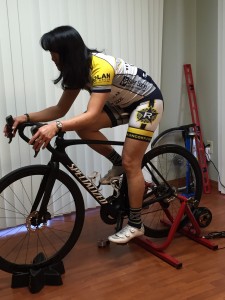Helping Your Bike Fit Your Body
As the weather gets warmer, the snow on the mountains begins to melt and days get longer, it’s time to get the bike out of the garage. Whether you’re dipping your toes into the world of cycling, or you’re already an experienced rider, a professional bike fit may be the key to a more comfortable and efficient ride.
What’s a Bike Fit?
A bike fit is a series of measurements and adjustments used to fine-tune a bike to its rider. A bike fit can help a cyclist become more efficient, allowing them to ride faster and longer, with more comfort and power. Many bike shops offer fits with the purchase of a bicycle, and certain fitness centers also offer bike fits. But a professional bike fit, conducted by someone trained in biomechanics, can offer more than simply manipulating parts on the bike. Professional bike fitters invest time and skills to evaluate an individual’s unique biomechanics, as well as riding and injury history. This knowledge allows them to fine-tune the bike to the body, which provides optimum power output while reducing over-use injury potential.
Not all bike fits are created equal
While many bike fits are focused on the bike, a professional bike fit is focused on the individual and his or her relationship with the bike.
“We perform a 20-point assessment of the body before beginning the on-bike fit,” explains Julie Young, head coach and director of Silver Sage Sports & Fitness Lab. “We assess muscle length, joint range of motion, and the individual’s functional movement patterns. An initial fit takes about two hours.”
Assessments during the two-hour bike fit include a process where Young works through each isolated area of a person’s body that relates to the bike and checks for issues. Young’s goal in a bike fit is to achieve an optimal positon to avoid joint strain and overuse injuries, as well as deliver more power in to their pedal stroke. “The bike fit also allows me to educate the athlete on the importance of pelvic and spinal posture to create a stable platform for the hips to drive power in to the pedals,” she says. “The fit will continue to improve when off-bike mobility and stability work is consistently incorporated in to training, so we provide our clients with a repertoire of these exercises. The fit also provides an ideal venue to help educate and enlighten the cyclist on the elements of an efficient pedal stroke.”
Lucie Oren is a competitive cyclist who has had all of her bikes fitted by Young. “There are a lot of reasons that I get a bike fit,” said Oren. “Because I race, I need to get as much power transfer and efficiency as I can. A bike fit makes it more comfortable to ride, as well. Before I had my bike fit, I had back pain, knee pain and hamstring pain after a long day of riding. All of that disappeared after my bike was properly fitted.”


